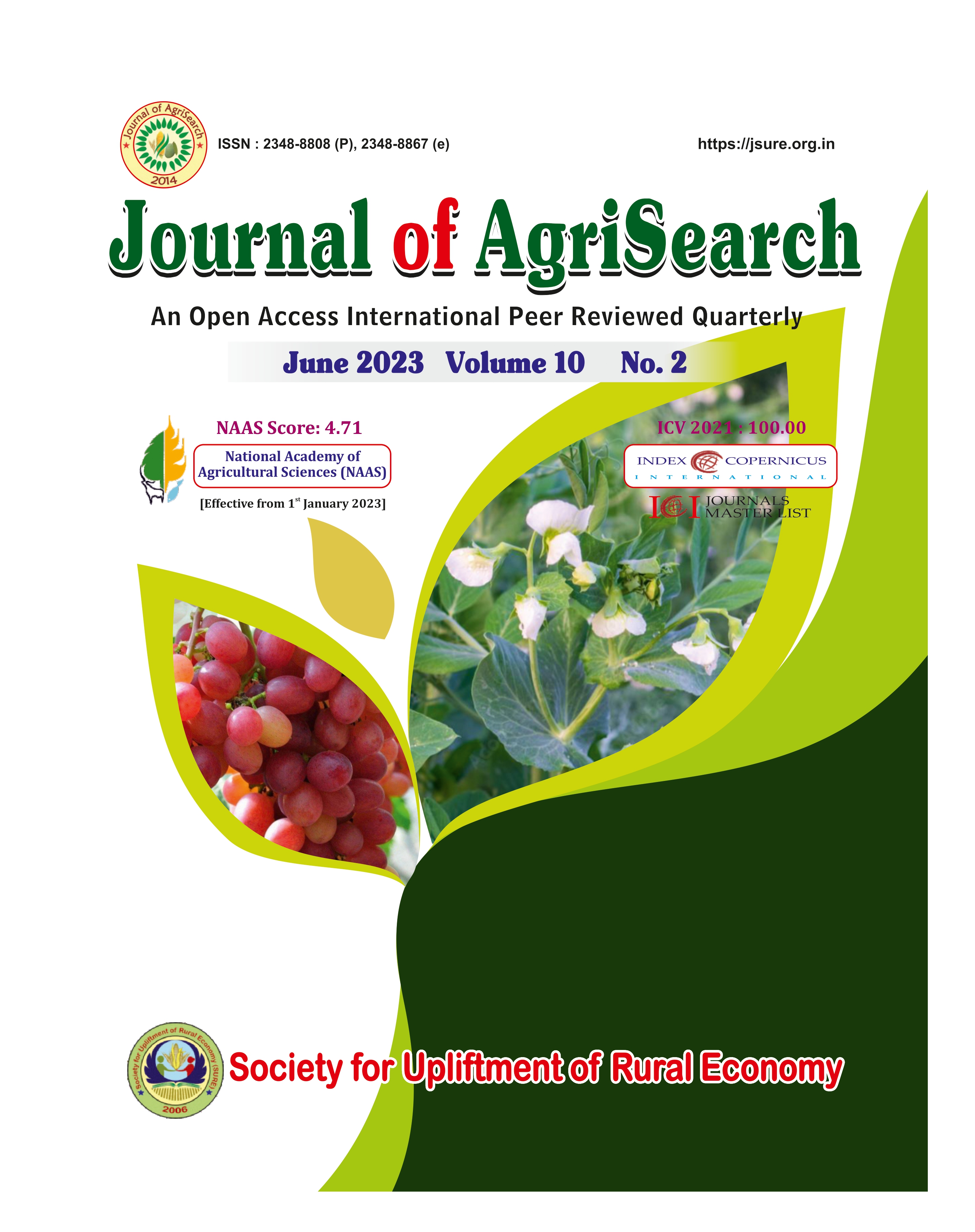An Analytical Study of Marine Exports from India
Marine Exports from India
DOI:
https://doi.org/10.21921/jas.v10i02.12732Keywords:
Marine products exports, Crustaceans, Molluscs, Frozen fish, Key words: Compound growth rate, Decomposition, Instability index, Food grains, Fruits, Vegetables.Abstract
The paper focuses on the international trade aspect of the fisheries sector in the Indian economy. The sector has regained its prominence as it evolved as the largest group in Indian agricultural exports in recent times. The study showed that the exports of Indian marine products have grown remarkably over the past two decades. Crustaceans dominated the exports, followed by molluscs and frozen fish. Fish fillets have also experienced significant growth in both quantity and value, contributing a good share to total exports. Despite challenges in live fish exports, most marine product groups have shown substantial growth rates in quantity and value. India has established itself as a prominent player in the global fisheries market, bagging a remarkable 5% share, with increasing shares in crustaceans and molluscs exports. The sector's contribution to India's total agricultural exports and its status as a consistent net exporter underscore its importance in trade dynamics. The United States has been the primary importing partner, but the rise of Vietnam, China and Thailand as significant players in recent years highlights the evolving export destinations. It is necessary to diversify the exports, prioritize value addition, and take up export promotion measures and market intelligence support to sustain and enhance the growth of Indian marine products exports. The growth of Indian marine products exports benefits the economy, supports nutritional security, and provides livelihood opportunities for coastal communities.
References
Anantharaju, V., Kumar, R., Rahangdale, S., Naveen Kumar, B. T., Abdul Azeez, P., & Kranthi Kumar, D. (2016). Indian seafood export: trends, forecast and market stability analysis. Indian Journal of Ecology. 43:793-796.
Department of Fisheries. (2021). Annual Report 2021-22, Ministry of Fisheries, Animal Husbandry and Dairying. Government of India. Retrieved from https://dof.gov.in/sites/default/files/2022-04/Annual_Report_2021_22_English.pdf
Department of Fisheries. (2022). Department of Fisheries, Ministry of Fisheries, Animal Husbandry and Dairying, Government of India. (2022). Handbook on fisheries statistics 2022. Retrieved from: https://ruralindiaonline.org /en/library/resource/ handbook-on-fisheries-statistics-2022/
FAO.(2021).FAO Yearbook. Fishery and Aquaculture Statistics 2019. Food and Agriculture Organization of United Nations United Nations, Rome. https://doi.org/10.4060/cb7874t
Anantharaju V, Kumar R, Rahangdale S, Naveen Kumar BT, Abdul Azeez P and Kranthi Kumar D. 2016. Indian seafood export: trends, forecast and market stability analysis. Indian Journal of Ecology 43: 793-796.
Department of Fisheries. 2021. Annual Report 2021-22, Ministry of Fisheries, Animal Husbandry and Dairying. Government of India. Retrieved from https://dof.gov.in/sites/default/files/202204/Annual_Report_2021_22_English.pdf.
Department of Fisheries. 2022. Department of Fisheries, Ministry of Fisheries, Animal Husbandry and Dairying, Government of India. Handbook on fisheries statistics-2022. Retrieved from: https://ruralindiaonline.org /en/library/resource/ handbook-on-fisheries-statistics-2022.
FAO. 2021. FAO Yearbook. Fishery and Aquaculture Statistics 2019. Food and Agriculture Organization of United Nations United Nations, Rome. https://doi.org/10.4060/cb7874t
FAO. 2022. The State of World Fisheries and Aquaculture 2022, Towards Blue Transformation. Food and Agriculture Organization of United Nations, Rome. https://doi.org/10.4060/cc0461en.
Guledagudda SS, Reddy SV and Paled MP. 2020. Analytical Study on Indian Fisheries Sector: Trends in Trade Performance. Journal of Economics, Management and Trade 26(11): 54-65.
International Trade Centre. (……..). ITC - Trade Impact for Good. https://intracen.org.
Kumar A. 2004. Export performance of Indian fisheries: Strengths and challenges ahead. Economic and Political Weekly pp. 4264-4270.
Shinoj P, Kumar Ganesh B, Joshi PK and Datta KK. 2009. Export of India's Fish and Fishery Products: Analyzing the Changing Pattern/Composition and Underlying Causes. Indian Journal of Agricultural Economics 64(4): 541-556.
Shyam SS, Sekhar C, Uma K and Rajesh S R. 2004. Export performance of Indian fisheries in the context of globalization. Indian Journal of Agricultural Economics 59(3): 446-464.


